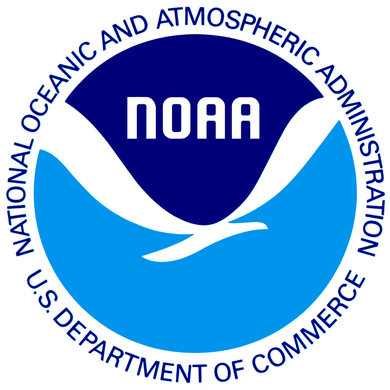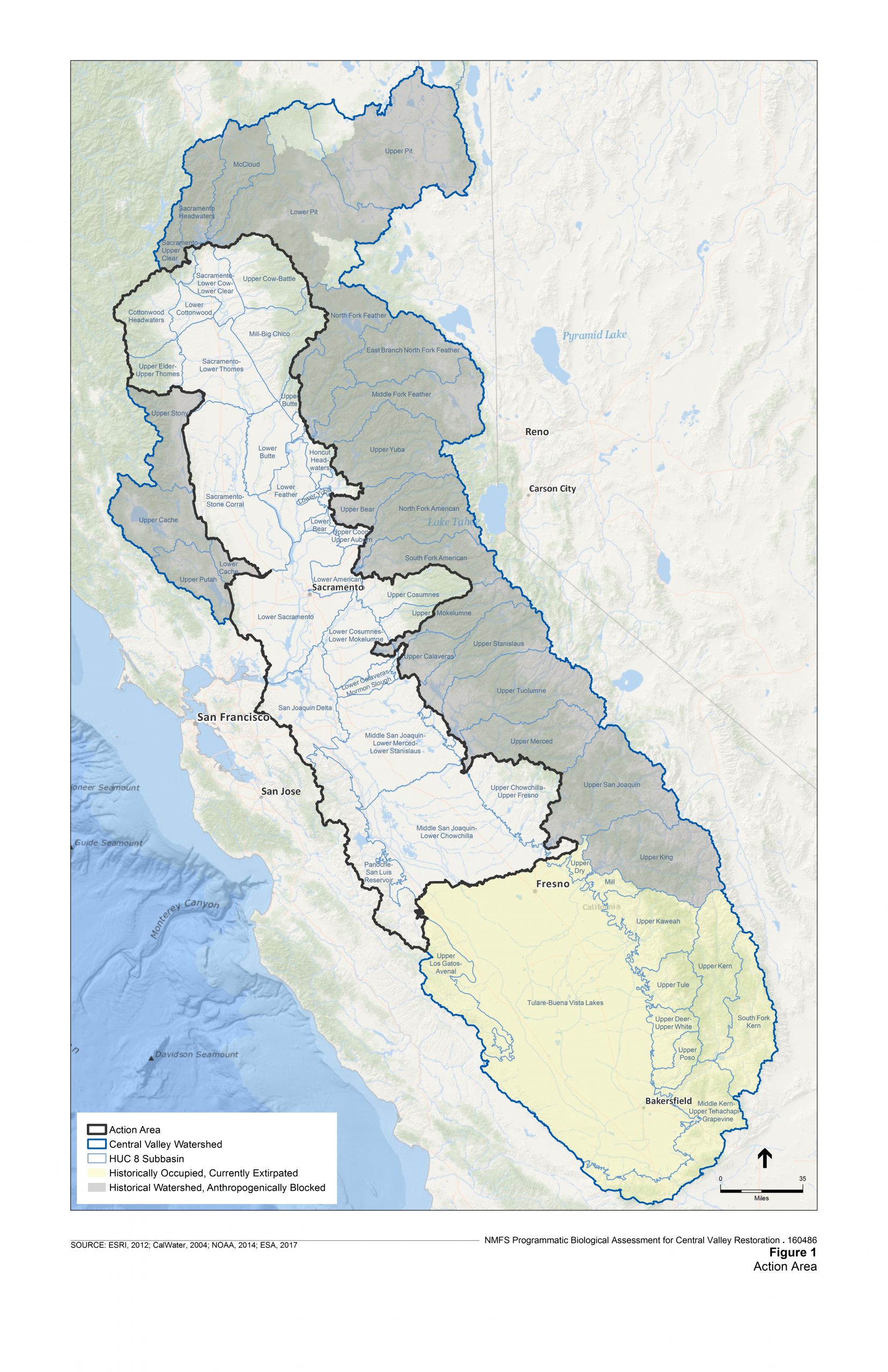Agency or authority
What this permitting pathway covers
Using this process for coverage under Section 7 of the Endangered Species Act for NMFS species is a faster and lower-cost process than writing a biological assessment and receiving a biological opinion for your individual project.
Eligibility
To be eligible for this Program a restoration project must have a federal nexus (e.g. typically federal permitting or funding from a federal agency). A permit from the Army Corps (Section 404 or Section 10) is often a federal nexus. The U.S. Fish and Wildlife Service (USFWS) is also a co-lead federal action agency.
For the purposes of the Program, a “restoration project” is defined as one that will result in a net increase in aquatic or riparian resource functions and services. Although a project covered by the Program may include multiple benefits, such as flood management, groundwater recharge, recreation, or climate change adaptation, all covered projects must meet the criteria of a restoration project defined by the Program and must remain consistent with NMFS’ Central Valley Salmon and Steelhead Recovery Plan.
Protection Measures Selection Tool
Protection measures from this PBO can be filtered based on project activities using Sustainable Conservation’s Protection Measures Selection Tool.
Restoration Consistency Determination
The NOAA Restoration Center (RC) coordinated with the California Department of Fish and Wildlife (CDFW) and added language to the Incidental Take Statement so that CDFW can issue Restoration Consistency Determinations for this PBO, providing another permitting efficiency.
Applicable locations
19,872 square miles within portions of the following counties of the NOAA Restoration Center’s Sacramento Field Office Region: Alameda, Amador, Butte, Calaveras, Colusa, Contra Costa, El Dorado, Fresno, Glenn, Madera, Mariposa, Merced, Nevada, Placer, Sacramento, San Benito, San Joaquin, Shasta, Solano, Stanislaus, Sutter, Tehama, Tuolumne, Yolo, and Yuba counties.
Permit documents
- Central Valley NMFS PBO
- Action Area Map
- Management Units Map
- Application for Inclusion in the PBO
- Post-Project Construction Monitoring Form
Expires on
No expiration date
How to apply
Contact Ruth Goodfield, Marine Habitat Resource Specialist, NOAA Restoration Center at ruth.goodfield@noaa.gov for more information about how to apply. See the Application form and Post-Project Construction Monitoring form above.
May be used with:
- CDFW Restoration Consistency Determination (CD)
- CEQA Program EIR for the State Water Resources Control Board Statewide Restoration General Order (SRGO PEIR)
- USACE Nationwide Permit 27 – Aquatic Habitat Restoration
- USACE Nationwide Permit 33 – Temporary Construction, Access, and Dewatering
- USACE Regional General Permit 16 – Aquatic Habitat Restoration and Enhancement Activities (Sacramento District)
- CDFW Fisheries Restoration Grant Program (FRGP)
- Water Board Statewide Restoration General Order (SRGO)
- CEQA Statutory Exemption for Restoration Projects (SERP) – CDFW
- CDFW Restoration Management Permit (RMP)
- USFWS Statewide Restoration Programmatic Biological Opinion (PBO)
- NOAA Restoration Center Programmatic Environmental Impact Statement (EIS)
Example projects
Species covered
- Sacramento River winter-run Chinook salmon (Oncorhynchus tshawytscha)
- Central Valley spring-run Chinook salmon (Oncorhynchus tshawytscha)
- California Central Valley steelhead (Oncorhynchus mykiss)
- Southern Distinct Population Segment (sDPS) of North American green sturgeon (Acipenser medirostris)
- Essential Fish Habitat for Pacific Coast Salmon and Pacific Ground Fish
Activities covered
In cases where the entire channel cross-section must be dewatered, the maximum length of contiguous stream that can be dewatered is 1,000 feet. The full list of programmatic sideboards begin on page 13 of the PBO, and full descriptions of covered project types begin on page 17.
- Instream Habitat Structures and Improvements
- Barrier Modification for Fish Passage Improvement
- Bioengineering and Riparian Habitat Restoration
- Upslope Watershed Restoration
- Removal of Small Dams (permanent, flashboard and other seasonal-type), with a dam height of either < 25 ft. in height from the natural stream bed or with impounding capacity < 50 acre-feet.
- Fish Screens
- Creation of Off-Channel/Side Channel Habitat
- Invasive Plant Removal and Revegetation to Improve Fish and Wildlife Habitat
- Wetland and Tidal Marsh Restoration and Enhancement
- Riparian Habitat Restoration and Enhancement
- Piling and Other Instream and Bank Structure Removal to Benefit Water Quality and Habitat
- Water Conservation and Streamflow Augmentation Projects to Improve In-Stream Flow Conditions for Fish
Note: More complex project types covered by the Program will require a higher level of oversight (those with complex designs requiring engineering review) and review by NMFS regulatory agency staff and agency engineers. See page 29 of the BO for requirements associated with these more complex project types.
These project types will include:
- culvert retrofit and replacement projects
- construction of new fish ladders/fish ways
- retrofitting of older fish ladders/fishways
- permanent removal of flash board dam abutments and sills
- installation of fish screens; and placement of weirs in concrete-lined channels.
Exclusions
The following activities are not within the scope of the NOAA RC, USFWS and Corps Restoration Program, and are not analyzed in the BO. As such, the following projects, or projects with the following elements, will require separate consultation with NMFS:
- use of gabion baskets;
- use of cylindrical riprap (e.g., Aqualogs);
- use of undersized riprap (rock that will not remain in place during a 100-year flow event);
- permanent dams or construction of concrete lined channels of any sort;
- use of chemically-treated timbers used for grade or channel stabilization structures, bulkheads or other instream structures;
- activities substantially disrupting the movement of those species of aquatic life indigenous to the waterbody, including those species that normally migrate through the project footprint; (e.g. habitat projects without geomorphic and hydraulic modeling showing a low potential to divert aquatic life and/or leave aquatic life stranded);
- projects that would completely eliminate a riffle, pool, or riffle/pool complex (There may be some instances where a riffle/pool complex is affected/modified by a restoration project (i.e., a culvert removal that affects an existing pool), these types of projects would be allowed under the Program.);
- water diversions, not explicitly identified in this Section under “Water Conservation and Streamflow Augmentation Project to Improve In-stream Flow Conditions for Fish,” to temporarily dewater a restoration project construction site, or small diversions used for the sole purpose of the drip-irrigation of restoration plantings
- off-channel/side-channel habitat projects that require the installation of a flashboard dam, head gate or other mechanical structures;
- projects that have the potential to create a passage barrier for anadromous fish species as determined by NMFS Fish Passage guidelines (including any associated maintenance activities, or lack thereof);
- rock bank protection, other than the minimum amount needed as determined by NOAA RC in coordination with NMFS;
- installation of infiltration galleries;
- predator control projects; and
- managed surrogate floodplain and managed returned flows that require manual ingress and egress of juvenile salmonids.
Application Tips and Resources
- The application process starts by submitting a 404 application to the Army Corps for a restoration or multi-benefit project.
- Before any formal review of the project, there will be a pre-application discussion with the Corps, Ruth Goodfield at the NOAA Restoration Center, and the applicant to ensure the programmatic is the proper path for the particular project.
- If the project would qualify, the applicant would fill out the project application and submit it to RuthGoodfield, who would then review it with the appropriate NMFS Section 7. staff.
- If the project is deemed eligible, Ruth Goodfield will send an email confirming eligibility to Corps staff, the NFMS Branch Chief, and the applicant. At that point, Corps Section 7 compliance with NMFS is complete, and the Corps staff can issue a 404 permit and send Ruth Goodfield a copy of the 404 permit.


